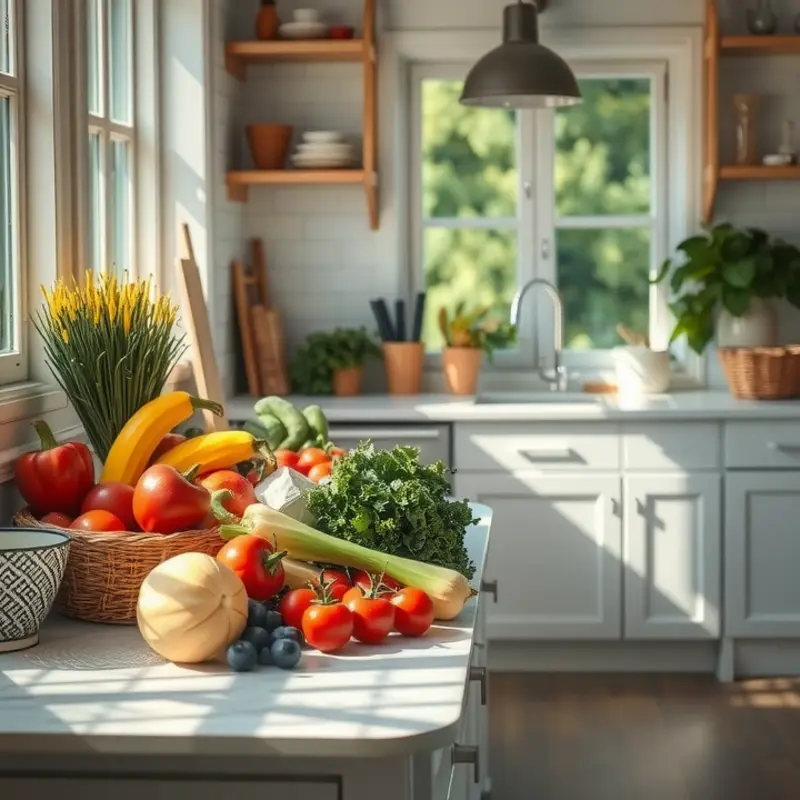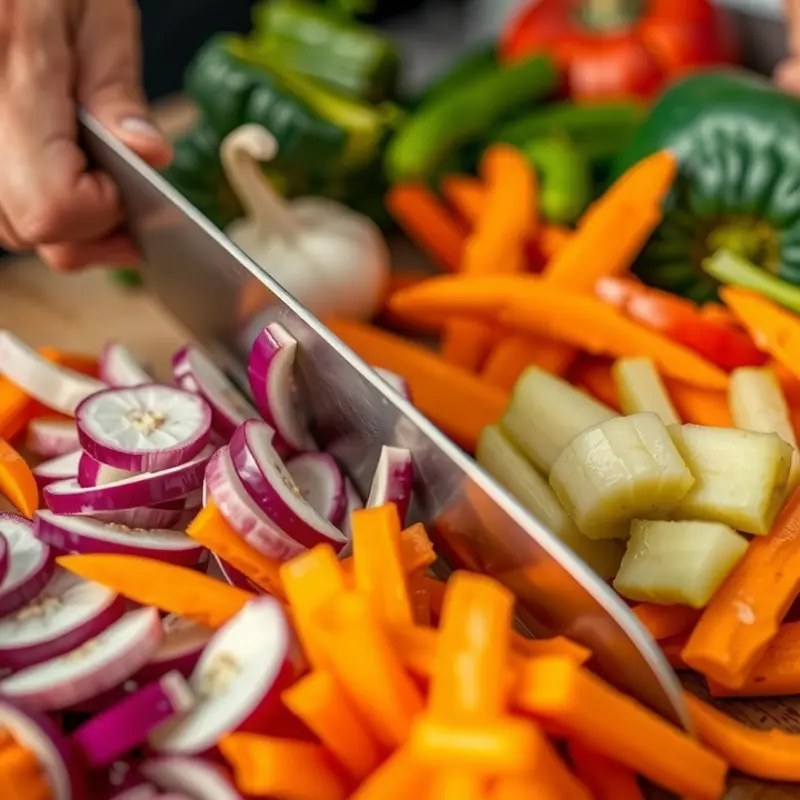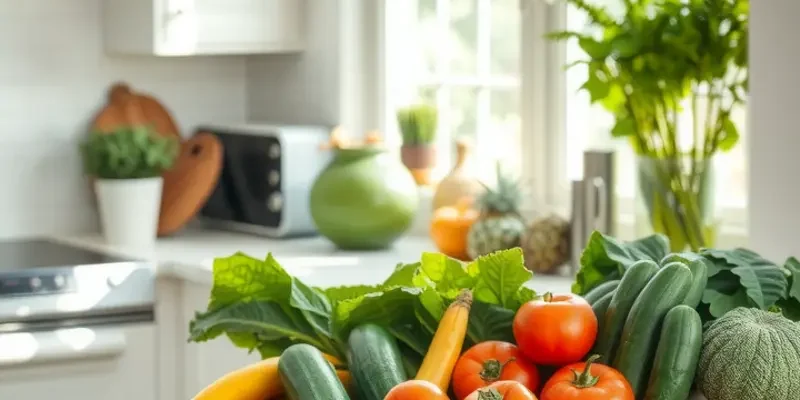Mindful food preparation is a holistic approach that connects the heart and mind while cooking. By focusing on the process and the ingredients, we can transform how we view food and, in turn, improve our emotional health. This practice encourages us to savor each moment spent in the kitchen and to appreciate the nourishment we provide for ourselves. As we explore this journey, we’ll discover practical ways to make cooking a meditative experience and cultivate mindful eating habits that texture our lives with positive emotional health.
Creating a Mindful Kitchen Environment

The kitchen is the heart of mindful food preparation, a sanctuary where nourishment and well-being begin. Crafting an environment that fosters mindfulness starts with cleanliness and organization. A cluttered space can overwhelm the senses, making it challenging to focus on the simple joy of cooking. Begin by ensuring all surfaces are clean and only keep essential items visible. A streamline setup invites you to engage deeply with each step of the preparation process.
Incorporating calming scents into your kitchen can significantly enhance the cooking experience. Aromas such as lavender, vanilla, or citrus can soothe the mind, inviting a sense of calm and clarity. Consider using essential oils or natural spices that align with your personal preferences. As you cook, the mingling scents of your ingredients will further enrich this olfactory tapestry, promoting a deeper sense of connection with your culinary creations.
Mindful music complements this sensory environment. Choose tunes that resonate with your mood and energy. Soft, instrumental music can create an atmosphere of tranquility, enhancing focus and making food preparation a meditative practice. The rhythm and tempo of your chosen soundtrack can guide your movements, allowing you to synchronize with the flow of cooking. Create playlists that suit different cooking activities and time of day, ensuring a bespoke auditory experience.
Selecting kitchen tools that resonate with you personally is essential for cultivating mindfulness. Tools made from natural materials often provide a tactile connection that is both pleasing and grounding. Consider how the weight and balance of a knife feel in your hand or the texture of a wooden spoon. Investing in quality pieces that you enjoy using encourages you to be present and engaged. By choosing tools that connect with you, cooking becomes less a task and more a fulfilling ritual.
Your mindful kitchen environment can also extend to storage solutions. By reducing waste and choosing eco-smart storage options, your kitchen setup will align with mindful living principles. Discover how to make these changes with our insights on eco-smart kitchen storage and see your kitchen transform into a haven of sustainability.
In crafting a mindful kitchen, remember that the journey is personal and evolving. Continually reassess what brings you peace and joy in your cooking space. With each subtle adjustment, you pave the way for a more profound culinary practice, turning meal preparation into a nourishing and mindful ritual.
Engaging Your Senses in Cooking

Cooking is an art that indulges all our senses, bringing mindfulness to each step can heighten the joy and satisfaction it brings. Engaging your senses during food preparation isn’t just about enhancing the meal—it’s an act of grounding you in the present moment. By focusing on sights, sounds, smells, and textures, you cultivate a richer culinary experience that nurtures your emotional well-being.
Begin by focusing on the vibrant colors of your ingredients. As you chop fresh vegetables, take a moment to appreciate the myriad hues in front of you. Notice how the greens of spinach differ from the more muted tones of lettuce, or how the crimson of a ripe tomato contrasts with the bright yellow of peppers. This visual appreciation not only enhances the beauty of your dish but also helps you connect more deeply with the food you prepare.
Next, tune in to the symphony of sounds that accompany cooking. The rhythmic chopping of a knife or the sizzle of an ingredient hitting a hot pan can be quite meditative. Each sound tells the story of transformation, as raw components metamorphose into a finished dish. Pay attention to these auditory cues; they offer insights into cooking progress and lead the way to mindful meal preparation.
The aromatic journey further enriches the cooking process. As you cook, lean over the pot and take gentle breaths to experience the layered aromas. Whether it’s the pungent scent of garlic being sautéed or the sweet fragrance of warming cinnamon, these smells can evoke emotions and memories, lifting the spirit. To enhance your skills in adding complexity to dishes through herbs without overwhelming the senses, explore this guide on creating flavor depth without excess salt.
Don’t forget the textures. The feel of food—whether it’s the silkiness of a sauce or the satisfying crunch of a fresh vegetable—adds a tactile dimension to your mindfulness practice. Take time to notice these sensations as you prepare meals. This physical interaction fosters a sensory connection, grounding your entire being in the moment.
Finally, savor the taste. Set aside distractions, serving yourself a mindful portion, and take deliberate bites. Let each flavor unfold on your palate, honing in on every nuance. Chewing slowly not only aids digestion but also allows you to fully enjoy the range of flavors you’ve created.
Practical exercises can enhance this sensory engagement. Before a meal, spend a minute observing the dish in its entirety, noticing color and arrangement. During cooking, practice a sensory checklist: What do you see, hear, feel, and smell? Incorporate mindful pauses, allowing your senses to reset. Through these exercises, cooking becomes a meditative practice that enriches your connection with food, ultimately contributing to a more profound and mindful eating experience.
Final words
As we journey through mindful food preparation, we discover that cooking can be a deeply personal and therapeutic experience. By embracing our senses and creating a welcoming kitchen space, we not only enhance our culinary skills but also nurture our emotional health. Mindful food preparation allows us to reconnect with ourselves and the world around us, fostering a sense of calm and appreciation for the nourishment we provide. As you begin to implement these practices, remember that the key lies in presence, acceptance, and love—infusing your meals with intention and joy.







